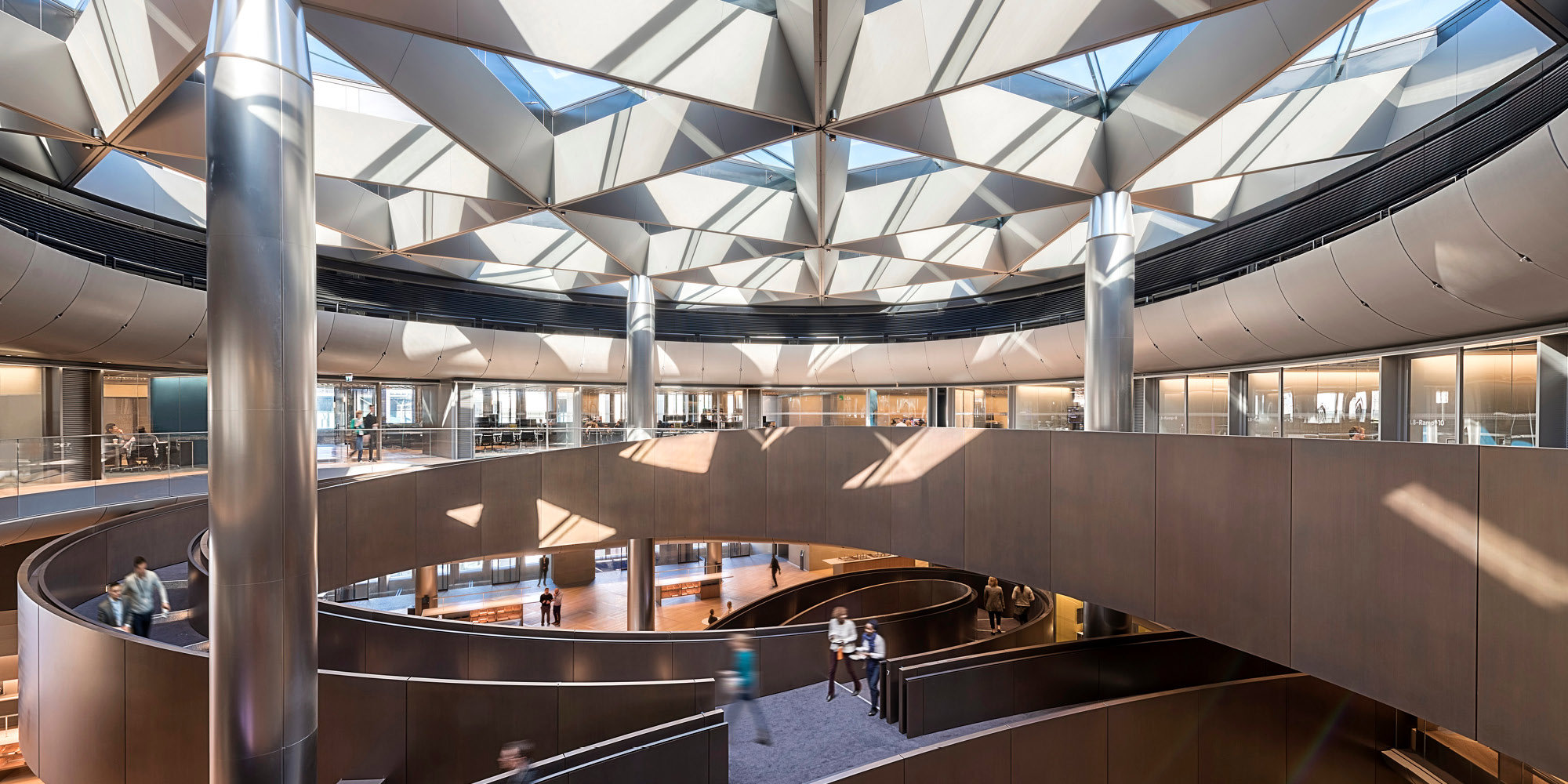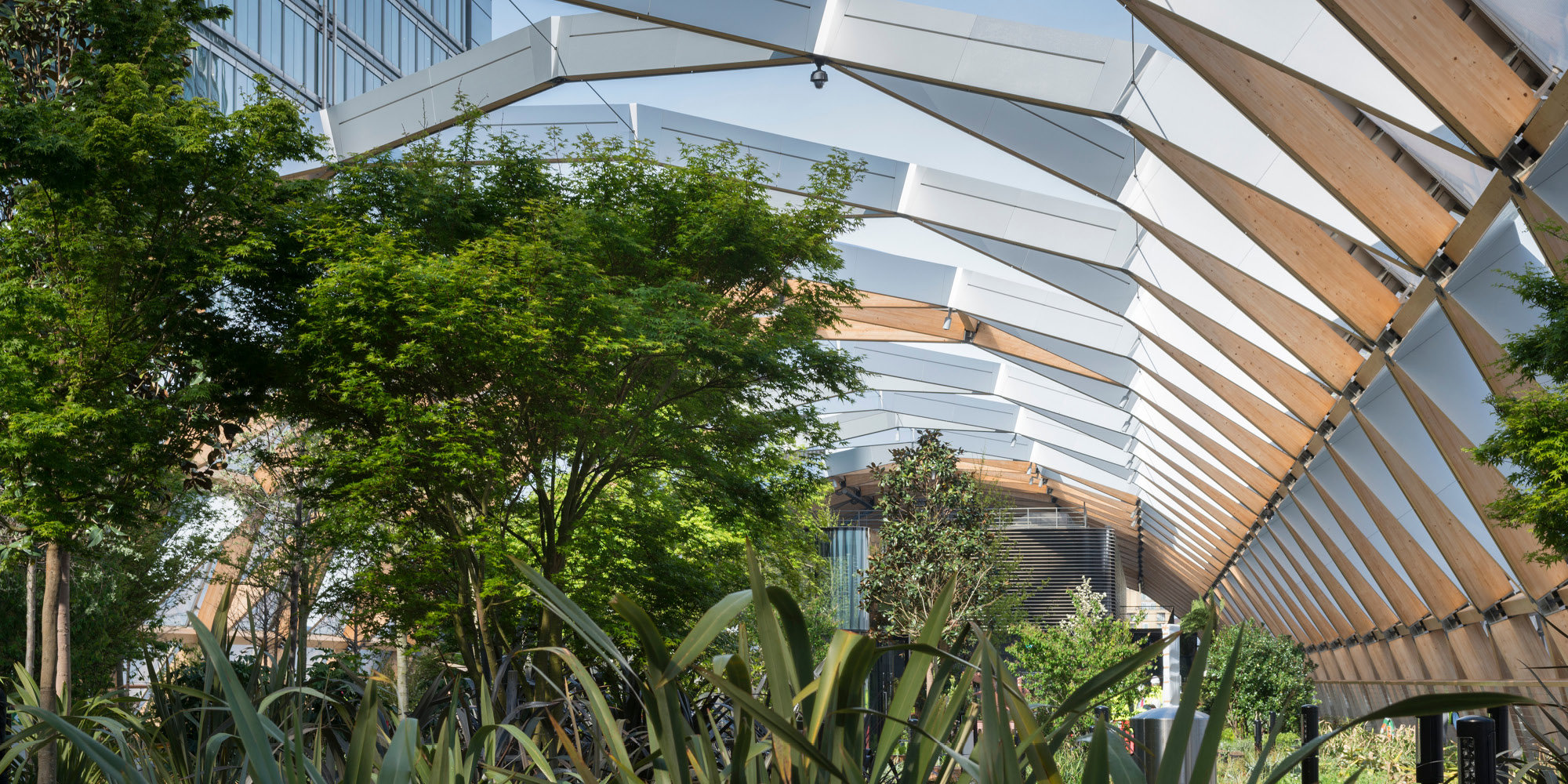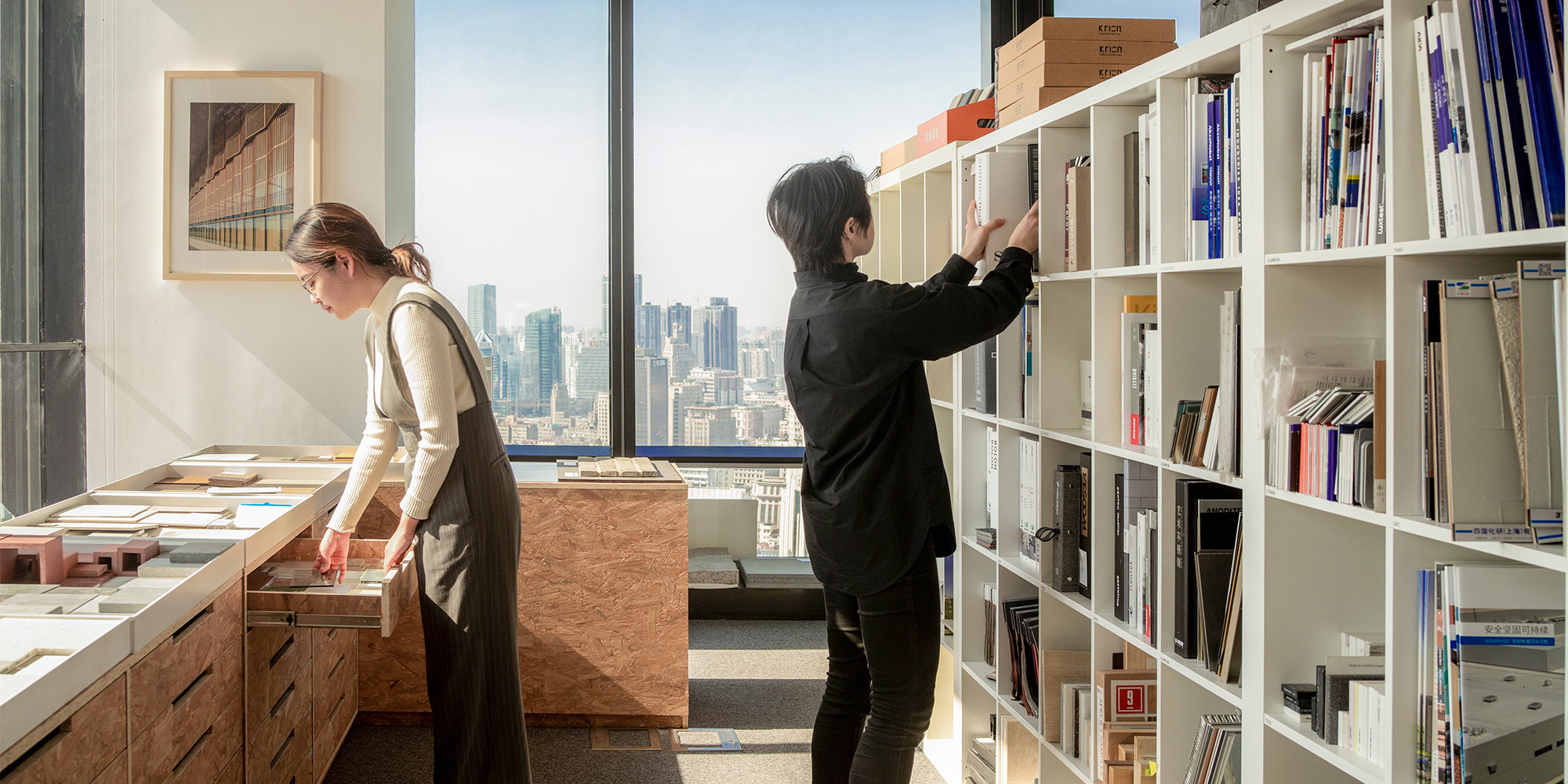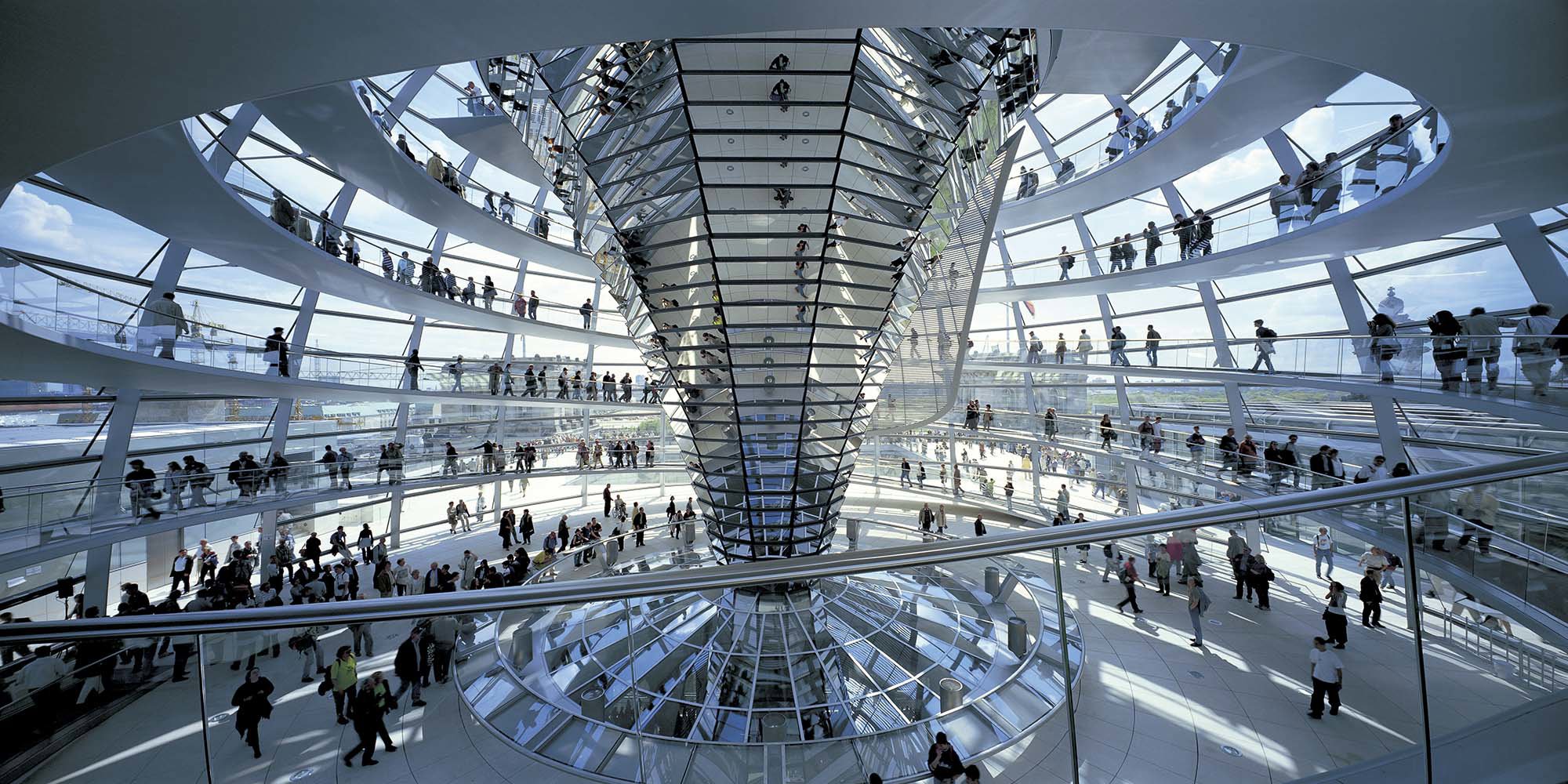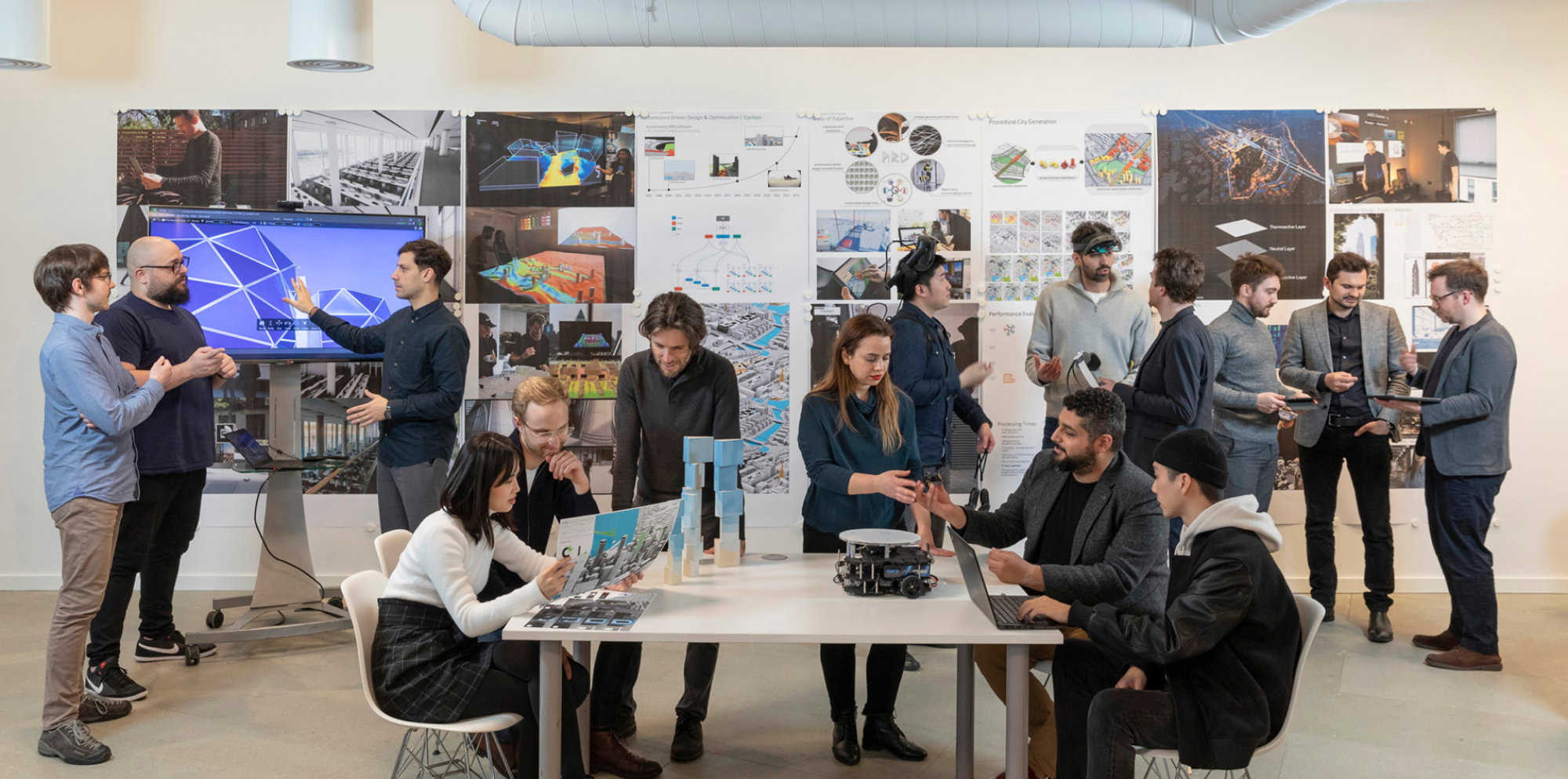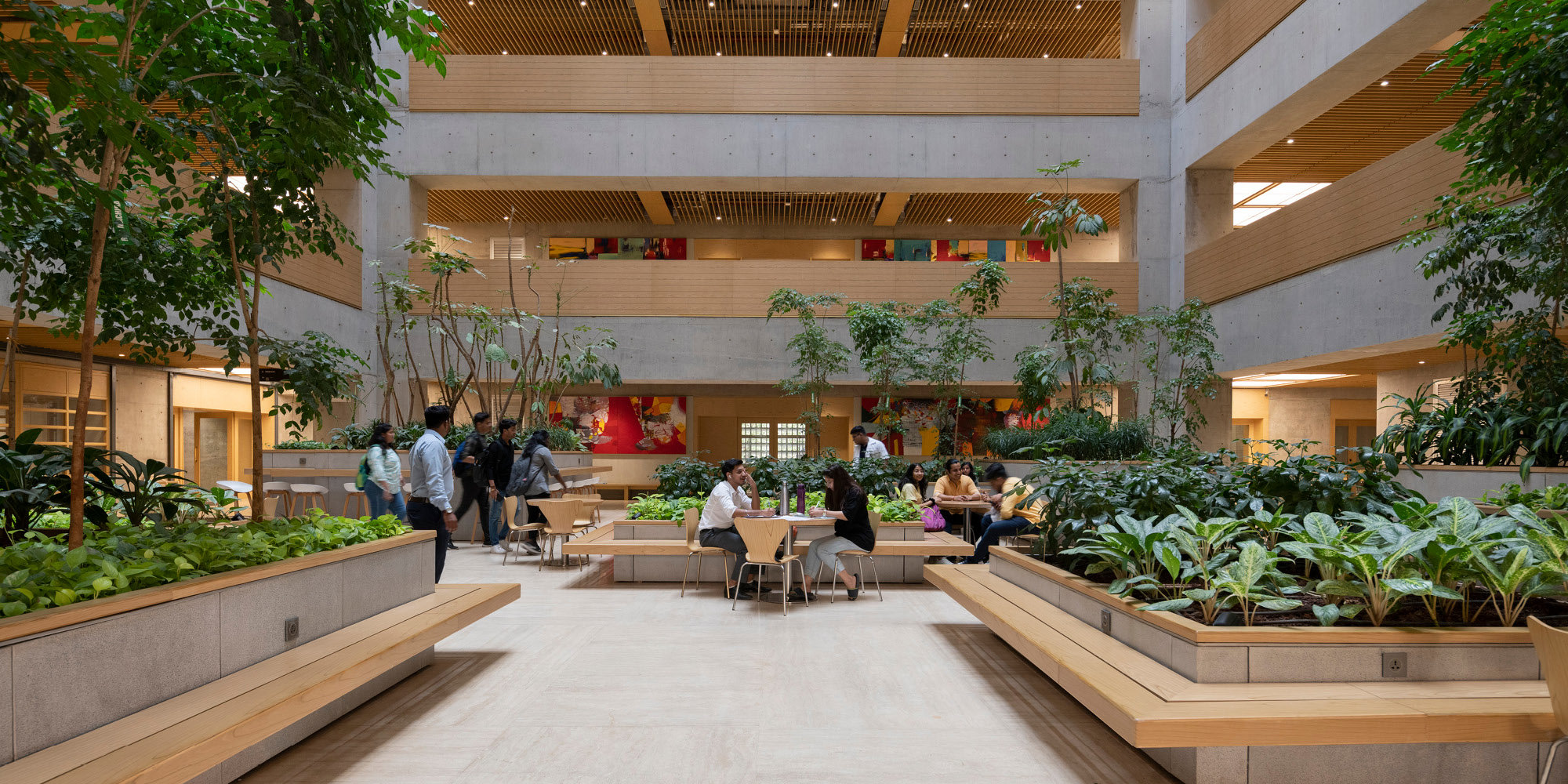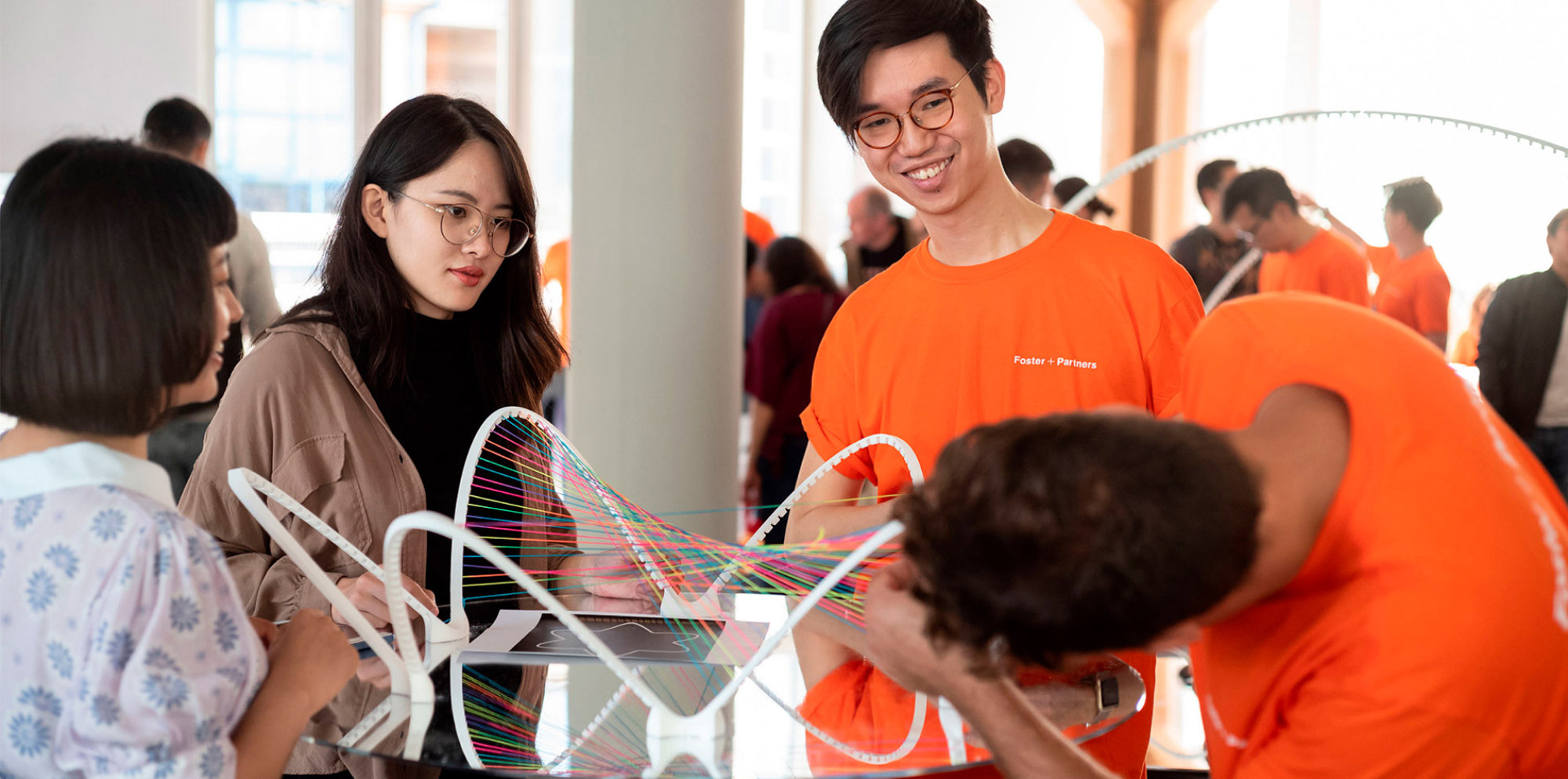Following the devastating earthquake that hit the Hatay Province of Turkey in 2023, Foster + Partners was invited to provide a vision for the reconstruction of the city of Antakya. Letizia Garzoli and Eleni Gklinou, from the Urban Design team and Nicola Scaranaro, Partner and architect at the practice, discuss their research approach and how it has informed the framework for rebuilding the city and its communities.
19th September 2024
Revitalising Antakya: Developing a Post-Earthquake Design Framework
On 6 February 2023, the city of Antakya, in the Hatay region of Türkiye on the Turkish-Syrian border, was struck by a series of devastating earthquakes – of a 7.8, 7.5, and 6.4 magnitude. The Red Cross reports that these earthquakes killed over 55,000 people in Türkiye and Syria and are ‘the worst earthquakes the region has seen in 20 years.’ Millions of people – many of which are children – are still living in temporary accommodation, with limited access to food, clean water, and education.
Photographs of damaged buildings in Antakya, taken on a site visit by the Foster + Partners design team following the 2023 earthquakes. © Foster + Partners
Photographs of damaged buildings in Antakya, taken on a site visit by the Foster + Partners design team following the 2023 earthquakes. © Foster + Partners
Photographs of damaged buildings in Antakya, taken on a site visit by the Foster + Partners design team following the 2023 earthquakes. © Foster + Partners
Antakya suffered enormous damage, with nearly 80 percent of buildings destroyed. In the wake of the earthquakes, the Türkiye Design Council (TDC) – an NGO promoting Turkish design and design advocacy – called upon international and local architects, urban designers, and engineers to assist with the redesign of the city. Foster + Partners, alongside Buro Happold, MIC-HUB, and leading Turkish practices DB Architects , SOUR, Kentsel Yenileme Merkezi, were invited to consider the economic, social, and architectural trajectory of Antakya – the outcome of which is a vision for a city masterplan.
TDC assigned Foster + Partners the west side of the Asi River, a primarily residential and commercial area of post-1960s buildings, nearly all of which are either destroyed or beyond repair. Unlike the old town in the east, where most of what remains of historic buildings were safe enough to be scaffolded and are undergoing restoration, the west side presented a more open set of challenges.
Foster + Partners’ architects and urban designers worked together alongside other members of the TDC’s initiative to formulate a response. Rather than prescribing a fixed design, our integrated team developed a framework that outlines – but does not dictate – how Antakya’s neighbourhoods might be rebuilt. By analysing the components that make up a place's identity – from the tangible to the intangible, the permanent to the transient, the formal and the informal, the grassroots to the superimposed – we could begin to interpret how that place might be designed.
A sense of place, a sense of belonging
Disasters are traumatic and transformative for a city’s urban fabric and present a challenge for designers in the wake of real and ongoing tragedy. Planning for resilience must address physical safety. But it must also address a sense of belonging, which supports social and mental resilience. The city was flawed in some ways, but it was also loved and impressed on its residents emotional geographies. As Mehmet Severoğlu, a guide in Antakya for over twenty years, told the BBC that after the earthquake, the city became unrecognisable, with the destruction of local landmarks leading to a sense of disorientation and alienation: ‘I can’t recognise where I am.’
Understanding the historical, infrastructural, and topographical layout of the city is vital for urban designers. A city is not only its buildings but its people. As Mehmet reflected, Antakya is ‘a city with so many different ethnicities, different religions [all living in] tolerance.’ Multiple identities can coexist within the same location, with communities attributing varied meanings to traditions and landmarks. These perceptions can lead to multivalent interpretations of a place’s significance, highlighting its complex and layered nature, and the subjectivity that comes with it.
How could we, as urban designers, architects and planners, negotiate the emotional and personal layouts of Antakya, while delivering a tangible and evidence-based design framework? Working across scales, and across disciplines, our eight-point framework for Antakya underpins a sensitive approach towards the city’s recovery. The following article discusses the city’s past, our research, our framework, and what we learned from the project.
A rich and turbulent history
Merchants travelling from Persia to the Mediterranean, around 300BCE, would likely have stopped in Antioch, as Antakya was known for centuries, a city founded by a general of Alexander the Great. Located in the fertile Amik Valley, Antioch developed alongside the Orontes River – now the Asi River – which also provided a key shipping port at its mouth.
Antioch’s situation, at the crossroad of north-south and east-west trading routes, made it a desirable economically and militarily – characteristics that caught the attention of the Roman Empire; and by 64 BCE, Antioch was the capital of Roman Syria and the third largest urban centre in the empire, following Rome and Alexandria.
Church of Saint Peter, Antakya. Also known as Knisset Mar Semaan Kefa (Classical Syriac); Aziz Petrus Kilisesi (Turkish). This church is composed of a cave carved into Mount Starius. The facade was built by crusaders in 1100, and was rebuilt again in the 19th century. One of Christianity’s oldest churches, the Church of Saint Peter was still intact after the 2023 earthquakes. © Alamy
Over the centuries, different communities, cultures, and languages all passed through and established themselves within Antioch. The city became a site for the exchange of knowledge (it is where the term ‘Christian’ was said to be first used), with temples, theatres, bathhouses, and ecclesiastical centres for theology all contributing to a rich scientific and cultural field.
The city infrastructure, which was connected to the Asi River, always played an important role in the city’s evolution. While the only remaining traces are fountains and canals in the middle of the streets to drain rainwater, there used to be numerous water wheels pumping from the river to supply bathhouses and gardens along its banks.
Natural disasters, including fires and a series of earthquakes, as well as invasions between the 6th and 16th centuries, drastically altered Antioch. The city transitioned from a flourishing Roman capital to a Byzantine frontier fortification. By the 11th Century, Antioch had become a Crusader principality. After nearly two centuries and five crusades, the city was taken by the Mamluks and razed to the ground, concluding its tumultuous medieval life cycle. By the time the Ottoman Turks reached the area in 1517, Antioch had diminished to the size of a small town.
Twentieth-century Antakya
Antioch remained under the control of the Ottoman Empire for four centuries. During this time, the opening of the Suez Canal in 1869, the Baghdad railway in 1903, and the reduced navigable capacity of the Asi River further directed trade away from the city. Following the First World War (which saw the partitioning of the Ottoman Empire) and the Franco-Turkish War, the 1921 Treaty of Ankara made the area an autonomous region under joint French and Turkish supervision. In the subsequent decades, the city’s layout, an organic urban pattern typical of Islamic Mamluk cities, transformed again. René Danger, a French planner, replanned the city. He facilitated access to the centre by enlarging streets or creating new roads – the strongest trace of this being the recreation of the old Roman axis, Herod Road, together with the creation of a square by the Habib Neccar Mosque. On the relatively empty land to the west of the Asi, Danger introduced a new centre including a cinema, civic building, post office, bank and schools. A city park was created, now Ataturk Park, along with a commercial axis, later known as Ataturk Street, featuring private and commercial buildings.
The plan reproduces Mamluk pattern with the introduction of new axis. © Antioch Expedition Archives, Department of Art and Archaeology, Princeton University
1839: Map of Antioch, which reproduces ancient Antioch with the projection of some of its key buildings and city walls. © Antioch Expedition Archives, Department of Art and Archaeology, Princeton University
1935: Site plan of ‘Antioch and Vicinity’ showing excavations and grid system. This map was created by the Princeton University archaeological excavation expedition to the city. It shows the boundaries of the Mamluk city cut through by the new/old Roman axis. On the west side of the river a radial scheme of roads extends from the city gate. © Antioch Expedition Archives, Department of Art and Archaeology, Princeton University
1932: Map of the site assembled from aerial photos. The composite image shows the city at the inception of Danger’s interventions. The west side of the river (top in the photo composite) is not yet developed.
© Antioch Expedition Archives, Department of Art and Archaeology, Princeton University
1932: A general view of Antioch, taken from the Muslim cemetery. In the foreground the condition of the west side of the river, primarily graveyards and countryside, is visible. Across the river is the majority of the Mamluk city. © Antioch Expedition Archives, Department of Art and Archaeology, Princeton University
On 29 June 1939, following a referendum, the Hatay State became the Hatay Province of Turkey, and remains so to this day. The city has since inflated in size, eventually merging with the nearby town of Defne. With this rapid growth came an increasingly complex set of urban challenges.
Issues faced by Antakya before the February 2023 earthquakes were faced by many cities globally: unsafe development, sprawl, and traffic congestion. In search of new land for construction, city expansion had infiltrated rural belts. This expansion didn’t follow a holistic, strategic urban plan and residents often lacked access to amenities, increasing the reliance on cars, while further reducing a sense of community. These problems were also not limited to the periphery; Antakya Cumhuriyet Square in the city centre, for example, had become a traffic roundabout.
Other challenges stem from Antakya’s relationship with its natural resources and topography. The Asi River flows through Lebanon, Syria and Türkiye, and has sustained the city’s agricultural, transport, and waste management practices for millennia. Changes to Türkiye’s flood risk management policies in the 1960s meant that the edges of the river were lined with tall retaining walls. As a result, it became inaccessible to residents, while its flood resilience is questionable – the walls are neither an adequate nor an attractive answer to rising water levels or storm surge events.
Developing a framework
Our framework for Antakya grew organically from the city’s existing urban plan, which we were committed to preserving wherever suitable; through close engagement with the city and its residents we obtained a sense of how to move forward. Our questions were manifold, for instance: who was a building intended for? Who built it? Where did the materials come from, how were they made, and what landscapes, economies, and beliefs – near or distant – are they connected to?
We observed the colours and materials of these buildings and thought about how they were associated with the visual identity of the city. We asked how buildings meet the street at ground level and what sort of life became possible in those meetings – whether on terraces, raised ground, steps, or other forms of inside-outside living. Similarly, alleyways and blocks were analysed; alongside physical appearance and scale, we understood their functionality in terms of the ‘rules’ they created about movement, and what forms of communal life they encouraged.
Front porch conversations used to happen with our neighbours … [we] used to gather in front of the door for evening tea and coffee chats. We had neighbourhood grocery stores right next to our house. It was a very intimate atmosphere… It was like a family.
Raşhan Bruğurcua
We also developed our understanding of Antakya through the pooled knowledge of participants in the TDC's program. Interviews with residents conducted by SOUR, an architectural firm engaged by the TDC, were instrumental and provided us with a more complex understanding of the cultural and emotional atmosphere of the city, and what matters to the residents in the act of rebuilding.
The old streets of Antakya are indispensable for us. That smell, that feeling, that something…
Emel Duman
Alongside this testimony, we also communed with local architects to further understand the specific needs of Antakya’s residents. We designed a Citizens Survey, which was deployed online to reach a greater number of respondents, including Antakyans who had relocated outside of the region. Its principal activity consisted in mapping several places connected with home, work, relationships, everyday life, and special events. Again, the aim was to understand the personal significance of places, the general pattern of urban life, and what was deemed important in the city. This phase of the project was a moving reminder that the act of rebuilding – even in the face of tragedy – is an opportunity (if not a necessity) for communities to assemble.
Eight strategies for rebuilding
Sometimes, municipalities rebuild with the same materials and plans as before. After heavy bombing in 1945, Warsaw was reconstructed according to pre-war plans, carefully restoring its monuments, streets, and homes. On the other hand, in the Tōhoku earthquake and tsunami in Japan in March 2011, it was necessary to move communities to tsunami-safe land, meaning that villages were relocated and necessarily redesigned. After studying and drawing knowledge from relevant post-disaster reconstruction examples throughout history and geography, it quickly became clear that an overly rushed response, along with a ‘fixed’ design solution, can lead a city to repeat its mistakes – or worse, create a new urban environment that alienates its residents. As a resident of Poggioreale, Sicily, which suffered an earthquake in 1968 told The Guardian: ‘I felt like an immigrant, [living in a substitute city] four kilometres away from my real home.’
Empowering communities that are often disenfranchised due to the speed of reconstruction or the lack of engagement is no easy task. Accordingly, we opted for a design framework that can leave room for evolving participation and ideas – whether they come from residents and communities or stakeholders at a policy or municipal level.
Model made by Foster + Partners depicting the building and layering of neighbourhoods. © Foster + Partners
Model made by Foster + Partners depicting the building and layering of neighbourhoods. © Foster + Partners
Photo taken by Foster + Partners design team during meetings with the Türkiye Design Council. © Foster + Partners
Based on this understanding and following our research, our urban design efforts intentionally focused on developing a set of eight design principles:
1. Build on safe land
Our foremost strategy is to establish protected zones away from flood-prone areas near the Asi River and its tributaries, based on expansion of the flood plains caused by the climate emergency. The river flooded as a result of the earthquakes, and much of the poorly-developed and sprawling neighbourhoods in flood-prone zones were destroyed by soil liquefaction. It was imperative that any recovery strategy addressed these infrastructural failures and incorporated the best urban design practices that could safeguard new developments.
Within the proposed protected zones we can remove the retaining walls and create new, open green spaces. ‘Sponge-like’ landscapes replace concrete and renaturalise the river’s edge. These act as water-permeable buffers that can mitigate flood risk, while adding more open spaces and reconnecting people to the water, which had been inaccessible for decades.
2. Improve circulation
The concepts of ‘street as a place’ and the ‘fifteen-minute neighbourhood’ are at the forefront of many cities’ attempts to bring back walkability, liveliness, and access amenities – all of which enhance residents’ quality of life. In Antakya, many of these concepts were already embedded within the city’s fabric, and they will prove crucial during the city’s rebuilding.
We propose to retain the road network where possible and adjust only when there is reason to do so. This is because residents have a cognitive map of the city: although buildings no longer exist, a familiar layout and scale can help Antakyans navigate new surroundings.
After re-establishing the city’s backbone, we can adjust or add streets, to ensure suitability for emergency vehicles and, where necessary, to prioritise walkability and pedestrian experience. Our priority lies in putting people first: adjusting street profiles, widening roads, and adding more space for green areas, cycling infrastructure, public transport stops and dedicated bus lanes, with wider pavements provided for outdoor semi-covered use.
3. Enhance open spaces
Retaining, restoring, and enhancing open spaces that are well-loved by residents – from Cumhuriyet Meydani and Ataturk Park to local parks or common courtyards – is a crucial step of our strategy. Ataturk Park can continue as a city-wide attraction with its long tree-shaded promenade and small pockets of gathering spaces. The edges of the Asi River can be completely reinvented and transformed into a new linear riverfront park, framing views of the historic city and the mountains. A new network of urban green spaces of diverse sizes and typologies – parks, nature walks, community plazas, playgrounds and pocket parks – can elevate residents’ experience while doubling the green space per capita, all within a ten-minute walk of residents’ homes.
Map and illustrations document the distribution and variety of scales and characters of the new open space network, all within walking distance for residents. © Foster + Partners
4. Identify neighbourhood clusters
After establishing flood-safe zones, we were able to identify thirteen areas for development. We defined those based on the concept of walkability, seeking to create districts and neighbourhoods that are easy for pedestrians to navigate and access amenities within a short walk.
Each district’s perimeter is defined by either a stream or a primary road, whereas its main spine is articulated as a high street that hosts retail and commercial uses – at the location of the original, retained high streets. At the heart of each district, community-related spaces – retained and restored buildings or new ones – act as points of reference to nurture a strong sense of belonging, and as beacons of refuge in the case of an emergency.
5. Create complete communities
At the edges of neighbourhoods that lie along a district’s main spine, new continuous frontages stand exactly where the high streets of Antakya stood. Our strategy at this scale is to retain the buildings that stand undamaged and integrate them into the urban fabric of the new proposals. At a high street’s intersection with another primary road, a new commercial cluster can host economic opportunities and workplaces for residents. Adjacent to the main spine, the local high streets can offer social infrastructure – schools, community gardens, libraries and cultural centres, or local coffee roasteries and kunefe shops – all the spaces that can improve community resilience and wellbeing for locals through renewed daily interactions.
More than the buildings, we want that cultural structure back. It shouldn’t kill the culture; it should blend even more seamlessly.
Emel Duman
Districts and neighbourhoods are also linked with a network of community routes – arteries that connect the hearts of each district, where community-related spaces are located. In an emergency, residents can follow the distinct paving on these streets, which can lead them to safety – a civic building co-located with an open space.
6. Improve access within neighbourhoods
Prioritising pedestrians is a goal that many cities find hard to achieve. For Antakya, we decided to construct each neighbourhood as a ‘superblock’ (inspired by the concept that Barcelona adopted so successfully). The neighbourhoods’ external edges function as a fast corridors for cars and public transport, while the hearts are calmer shared streets with integrated micro-mobility options and one-way roads. This system forces vehicular traffic to loop, keeping the neighbourhood cores neighbourhood free from through-traffic and allowing for faster cycling lanes along community routes.
7. Enhance connectivity at a city scale
Rebuilding presents an opportunity to reduce the reliance on private vehicles through better pedestrian strategies and also by optimising public transit to create a reliable and efficient network. We have identified major intersections on the city’s ring road that can be used as multi-modal hubs and the potential for a new railway link to provide better connectivity for suburban and intercity movement.
8. Build back
The evolution of any city relies on flexibility and adaptability. To help the city return to its original rhythm, livelihood and pattern of growth, it is key to build back thoughtfully and controlling where development happens is a crucial goal. Densifying in the centre and along commercial and retail axes, such as high streets, can limit sprawl, providing the same number of residential units within a more compact area.
Density goes hand-in-hand with land uses, which we have largely retained to recreate a familiar urban experience. We propose commercial clusters at equidistant locations from the Antakya Merkez and the ring road, to ensure easy access for all residents. Finally, recognising the city’s potential for growth, we have identified a new, mixed-use corridor towards the north of the city, where we relocate the light manufacturing that lay in flood-prone zones, and through a new building typology, lay the foundations for the city’s expansion.
A philosophy of recovery
Our design efforts for Antakya oscillate between building new and preserving memories recorded in a lost urban fabric. An open-ended design framework, in lieu of a ‘fixed’ masterplan, is better suited to this context and place as it offers the necessary flexibility to give a city in distress the tools to move forward.
There is such a deep connection with Antakya that we believe people will somehow come back here…. There is hope.
Doğuş Genç
Recovery will be dependent on legislative efforts and adequate investment, meaning that the ‘success’ of any rebuilding is often enabled – or curtailed – by economic and political contexts. However, architects and urban designers do have a key role to play; we can make informed and intelligent proposals, we know how to make the spaces between buildings function better, and we can promote and advocate for a fairer process of co-design that returns a sense of agency to the people of Antakya. This is a non-linear process requires much more than quick construction – habits, memories, trust, and a sense of ownership cannot return overnight.
Rebuilding Antakya is a social project as much an architectural and infrastructural one; it must address the practicalities of safely rebuilding structures that provide shelter and security, while restoring a community’s habitual and emotional ways of life – the rhythms that sustain Antakya’s rich identity. Our framework attempts to do this across all scales. It understands rebuilding as an act of sustained care and attention, one dependent on and guided by community.
Author
Letizia Garzoli, Eleni Gklinou, Nicola Scaranaro
Author Bio
Letizia Garzoli is an urban designer at Foster + Partners, in the Urban Design Research and Planning team. Together with a multidisciplinary team that includes anthropologists, economists, planners, and environmental psychologists, they tackle both strategic and detailed aspects of masterplan projects, aiming to create healthier, more socially resilient urban environments. Letizia holds an MArch from Politecnico di Milano and an MDes in Critical Conservation from the Harvard Graduate School of Design. Her personal interests lie at the intersection of architecture, urban planning, and legal frameworks, exploring how architecture functions as both a political tool and a force for social change at multiple levels.
Eleni Gklinou is an architect engineer and urban designer based in London, with a passion for research-driven design that enhances cities and places by understanding their physical and social systems. As part of the Urban Design Group at Foster + Partners since 2020, she contributes her creative enthusiasm to global projects at a variety of scales. Eleni has also taught at the Architectural Association and Columbia University GSAPP, where she earned her M.Sc. in Architecture and Urban Design. She holds a Diploma in Architectural Engineering from Aristotle University of Thessaloniki, Greece.
Nicola Scaranaro graduated from IUAV, Venice, in 2005 and joined the practice in the same year initially working on the award-winning Jameson House Tower in Vancouver. He has designed buildings in 15 different countries and he has won several prestigious design competitions. His approach, sensitive to location and culture, harnesses the skills, enthusiasm and knowledge of integrated design teams, clients and communities to create vibrant, economically resilient and inspirational urban environment.
Editors
Tom Wright and Clare St George
